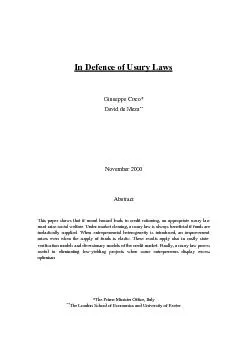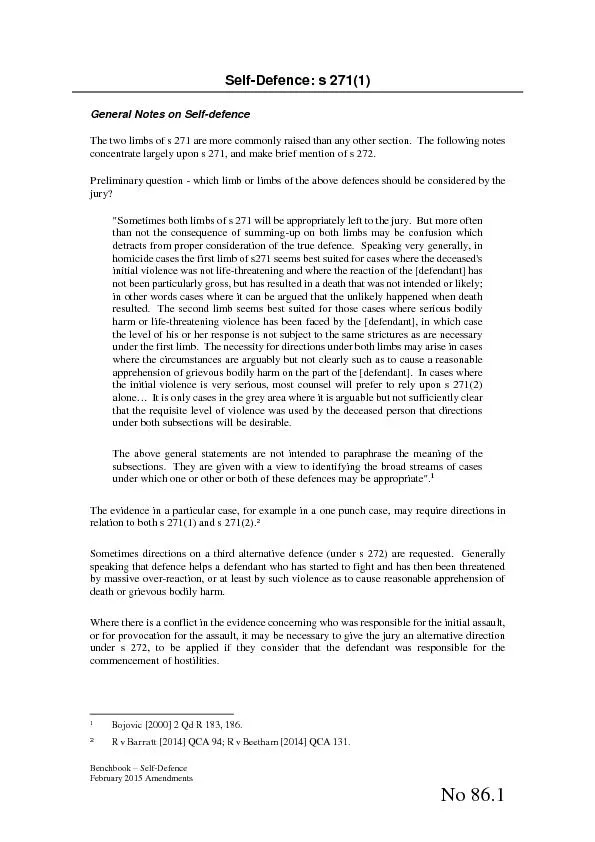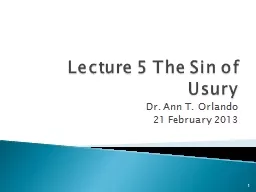PDF-In Defence of Usury Laws
Author : marina-yarberry | Published Date : 2015-11-30
Giuseppe CocoDavid de MezaNovember 2000AbstractThis paper shows that if moral hazard leads to credit rationing an appropriate usury lawmust raise social welfare
Presentation Embed Code
Download Presentation
Download Presentation The PPT/PDF document "In Defence of Usury Laws" is the property of its rightful owner. Permission is granted to download and print the materials on this website for personal, non-commercial use only, and to display it on your personal computer provided you do not modify the materials and that you retain all copyright notices contained in the materials. By downloading content from our website, you accept the terms of this agreement.
In Defence of Usury Laws: Transcript
Download Rules Of Document
"In Defence of Usury Laws"The content belongs to its owner. You may download and print it for personal use, without modification, and keep all copyright notices. By downloading, you agree to these terms.
Related Documents














